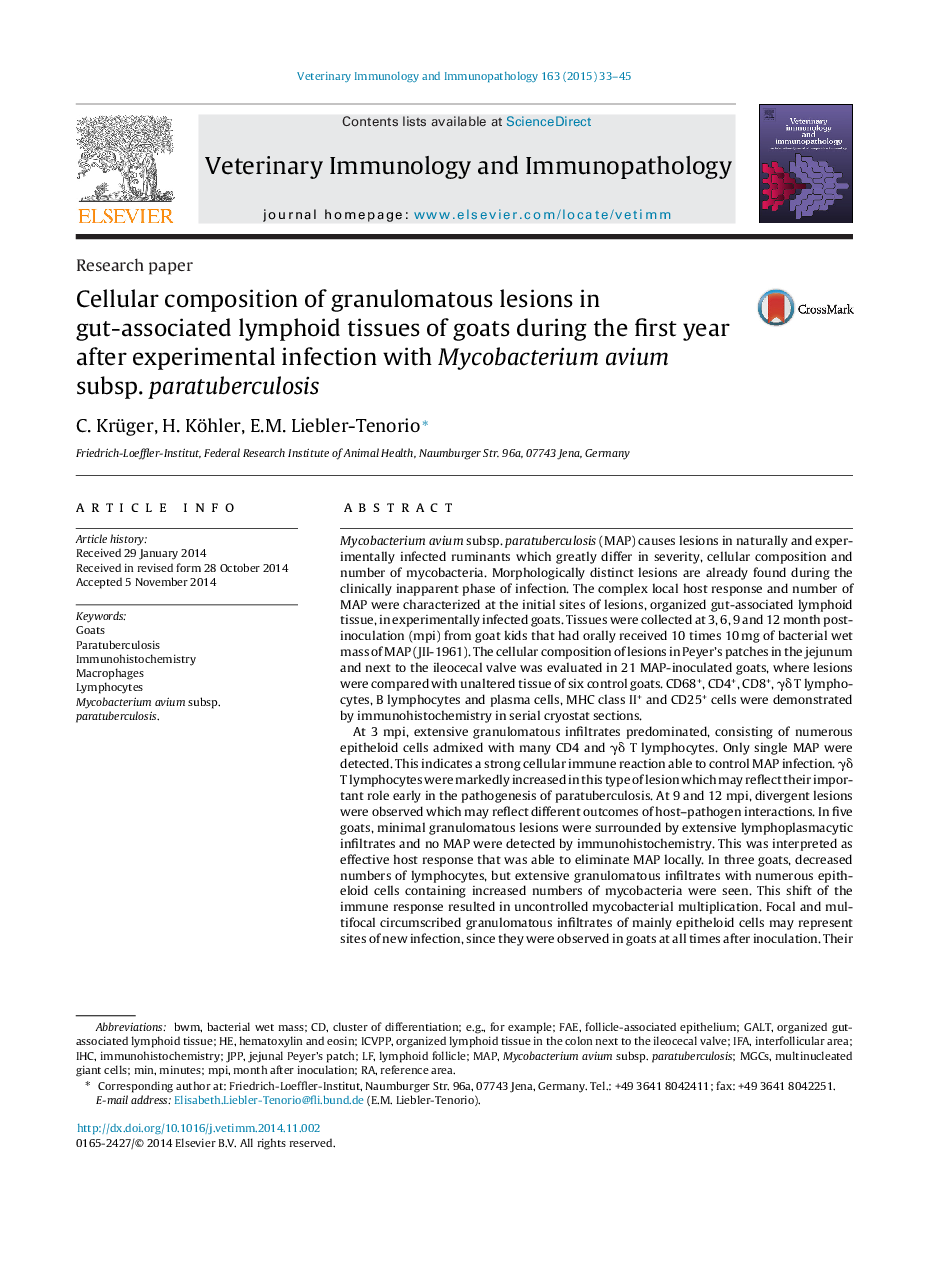| کد مقاله | کد نشریه | سال انتشار | مقاله انگلیسی | نسخه تمام متن |
|---|---|---|---|---|
| 2461426 | 1555027 | 2015 | 13 صفحه PDF | دانلود رایگان |

Mycobacterium avium subsp. paratuberculosis (MAP) causes lesions in naturally and experimentally infected ruminants which greatly differ in severity, cellular composition and number of mycobacteria. Morphologically distinct lesions are already found during the clinically inapparent phase of infection. The complex local host response and number of MAP were characterized at the initial sites of lesions, organized gut-associated lymphoid tissue, in experimentally infected goats. Tissues were collected at 3, 6, 9 and 12 month post-inoculation (mpi) from goat kids that had orally received 10 times 10 mg of bacterial wet mass of MAP (JII-1961). The cellular composition of lesions in Peyer's patches in the jejunum and next to the ileocecal valve was evaluated in 21 MAP-inoculated goats, where lesions were compared with unaltered tissue of six control goats. CD68+, CD4+, CD8+, γδ T lymphocytes, B lymphocytes and plasma cells, MHC class II+ and CD25+ cells were demonstrated by immunohistochemistry in serial cryostat sections.At 3 mpi, extensive granulomatous infiltrates predominated, consisting of numerous epitheloid cells admixed with many CD4 and γδ T lymphocytes. Only single MAP were detected. This indicates a strong cellular immune reaction able to control MAP infection. γδ T lymphocytes were markedly increased in this type of lesion which may reflect their important role early in the pathogenesis of paratuberculosis. At 9 and 12 mpi, divergent lesions were observed which may reflect different outcomes of host–pathogen interactions. In five goats, minimal granulomatous lesions were surrounded by extensive lymphoplasmacytic infiltrates and no MAP were detected by immunohistochemistry. This was interpreted as effective host response that was able to eliminate MAP locally. In three goats, decreased numbers of lymphocytes, but extensive granulomatous infiltrates with numerous epitheloid cells containing increased numbers of mycobacteria were seen. This shift of the immune response resulted in uncontrolled mycobacterial multiplication. Focal and multifocal circumscribed granulomatous infiltrates of mainly epitheloid cells may represent sites of new infection, since they were observed in goats at all times after inoculation. Their presence in goats with minimal granulomatous lesions surrounded by extensive lymphoplasmacytic infiltrates may indicate that despite the local clearance, the infection may be perpetuated.The complex cellular immune reactions postulated for the pathogenesis of paratuberculosis were demonstrated at the local sites of infection. These early host–pathogen interactions are most likely essential for the eventual outcome of the MAP infection.
Journal: Veterinary Immunology and Immunopathology - Volume 163, Issues 1–2, 15 January 2015, Pages 33–45